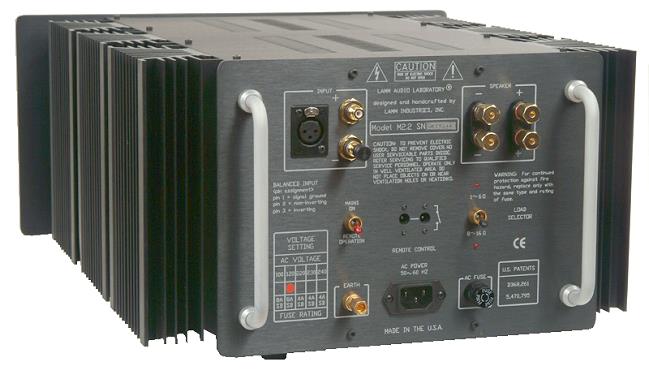Introduction
At one CES years ago, I wandered into the Lamm Industries exhibit at
the Alexis Park hotel where all the high end audio companies displayed their products.
Lamm had two monoblock power amplifiers on the floor,
each rated at 110 watts in pure Class A.
The monoblocks were huge, but, as I said, rated at
"only" 110 watts each.
The entire room was shaking from the powerful sound
that these amplifiers were producing.
Readers who have heard Lamm amplifiers are probably
nodding their heads, "Yup. Been there, done that."
Ever since then, I have always made a point to go by
the Lamm exhibits when I attend audio conventions.
I subsequently interviewed
Vladimir
Lamm at a show in San Francisco. He is a very interesting fellow. From
Russia originally, and immigrated to the US a long time ago. He had designed audio
equipment there.
After coming to the USA, he, of course, continued to
design audio equipment and started Lamm Industries.
Although tubes started disappearing from electronic
components in the US decades ago, tubes continued to be a part of the
electronics industry in Russia. So, when Lamm came to the US, he
incorporated tubes in his designs, and he still does that now. Every
preamplifier and power amplifier that Lamm manufactures, has at least one
tube in it.
M2.2
The Lamm M2.2 is a monoblock hybrid (mixture of tubes
and transistors) power amplifier. It
uses one tube (6922 triode) as the second stage. The input stage and output
stage are solid state.
Power output is specified at 220 watts RMS into 8 ohms
and 440 watts RMS into 4 ohms, but it is also rated into 2 ohms and 1 ohm.
On the rear panel, besides the XLR and RCA input jacks,
and two pairs of five-way speaker binding posts, there is a toggle (seen in
the photo above the fuse) that lets you select whether you are driving
speakers rated at 1 to 6 ohms, or 8 to 16 ohms. The toggle limits the supply
voltage and increases the idle current of the output stage
when driving low impedance speakers.

You can also see the massive heat sinks. Remember, this
is "just" a 220 watt monoblock. So, why all the heat sinks? (There
are multi-channel amplifiers on the market with 5 x 200 watts or 7 x 200
watts that have less heat sinks than the M2.2.)

The reason is that the M2.2 is biased at 41 watts Pure
Class A when driving 8 ohm speakers, and 21.5 watts Pure Class A with 4 ohm
loads.
When an amplifier is biased into Class A, about four to
six times that amount is dissipated as heat when at idle. So, the M2.2 puts
out about 280 watts in heat, even at idle (no music playing). That can
warm the room up pretty good, not to mention make the wheel on your electric
meter spin like a Frizbee®.
Indeed, the heat sinks on the M2.2s get very hot during use.
To bias a power amplifier so high, means a big power
supply, so that is why this thing weighs 71 pounds. That is as much as some
big receivers that are rated at more than 100 watts per channel x 7. The
difference is that the receivers are not biased into Class A (well, maybe a
watt or two).
What's the big deal with Class A? Biasing into Class A
means that current is flowing in the output stage at all times, enough to
deliver the rated amount of watts at Class A. So, with the M2.2 biased to 41
watts of Class A power, the current to the speakers is instantly available,
up to 41 watts output.
This contrasts with other amplifiers that are not biased into Class A, where
the current has to be turned on when it is needed (this is Class B). This
slight delay in time between the demand and the actual current becoming
available, is the difference, and it results in cleaner sound when the
current does not have to be turned on before being delivered.
Now, the difference in sound quality between Class A
and Class A/B (such as a receiver that has a watt or two in Class A) is not
huge. If it were, consumers would never accept Class A/B products. Class A
just gives the aficionado that last bit of audio nirvana. Of course, you
have to be willing to pay for it, because those big power supplies are
really expensive, especially when they consist of the parts quality you find
in a Lamm product.
Click Here to Go to Part II.